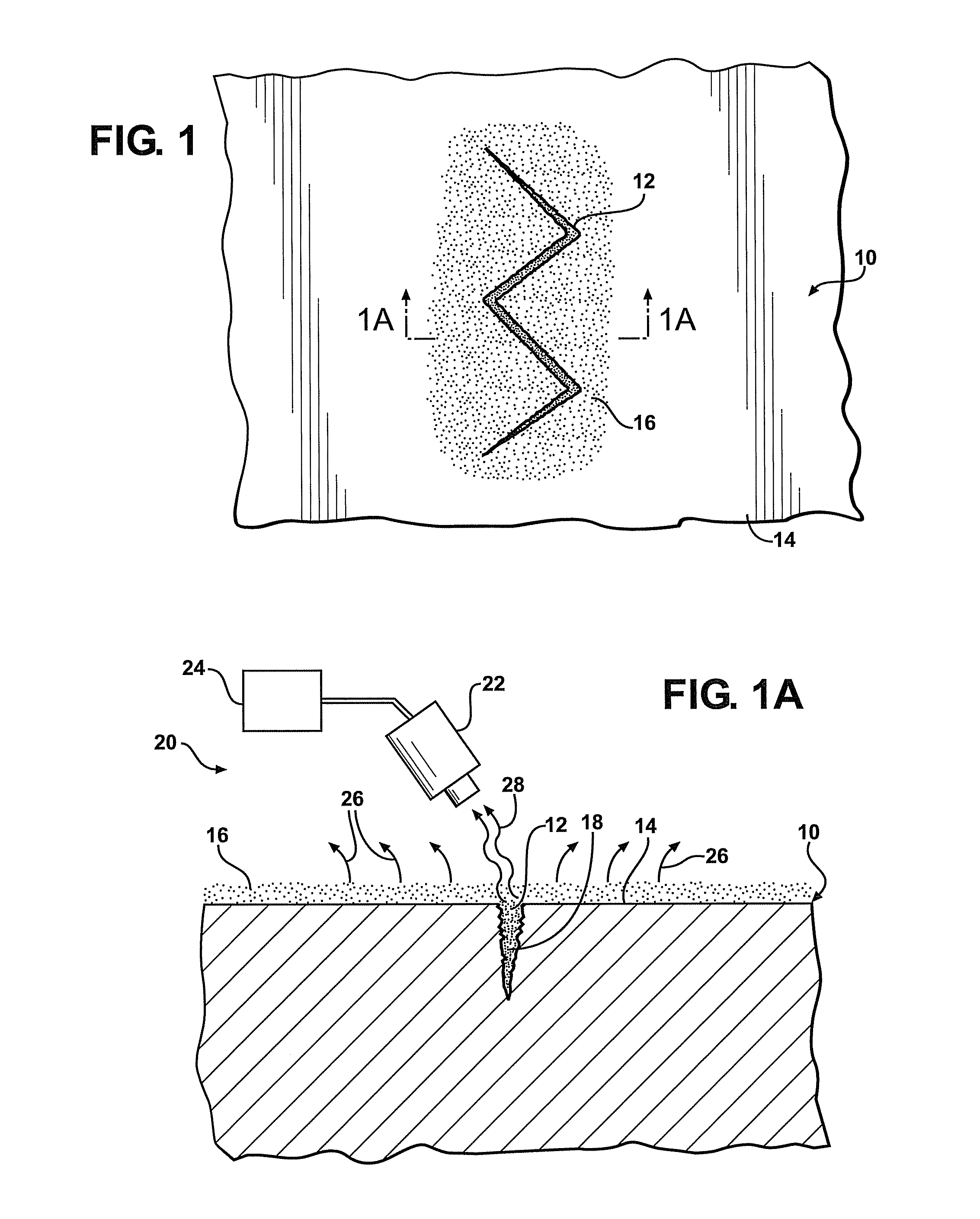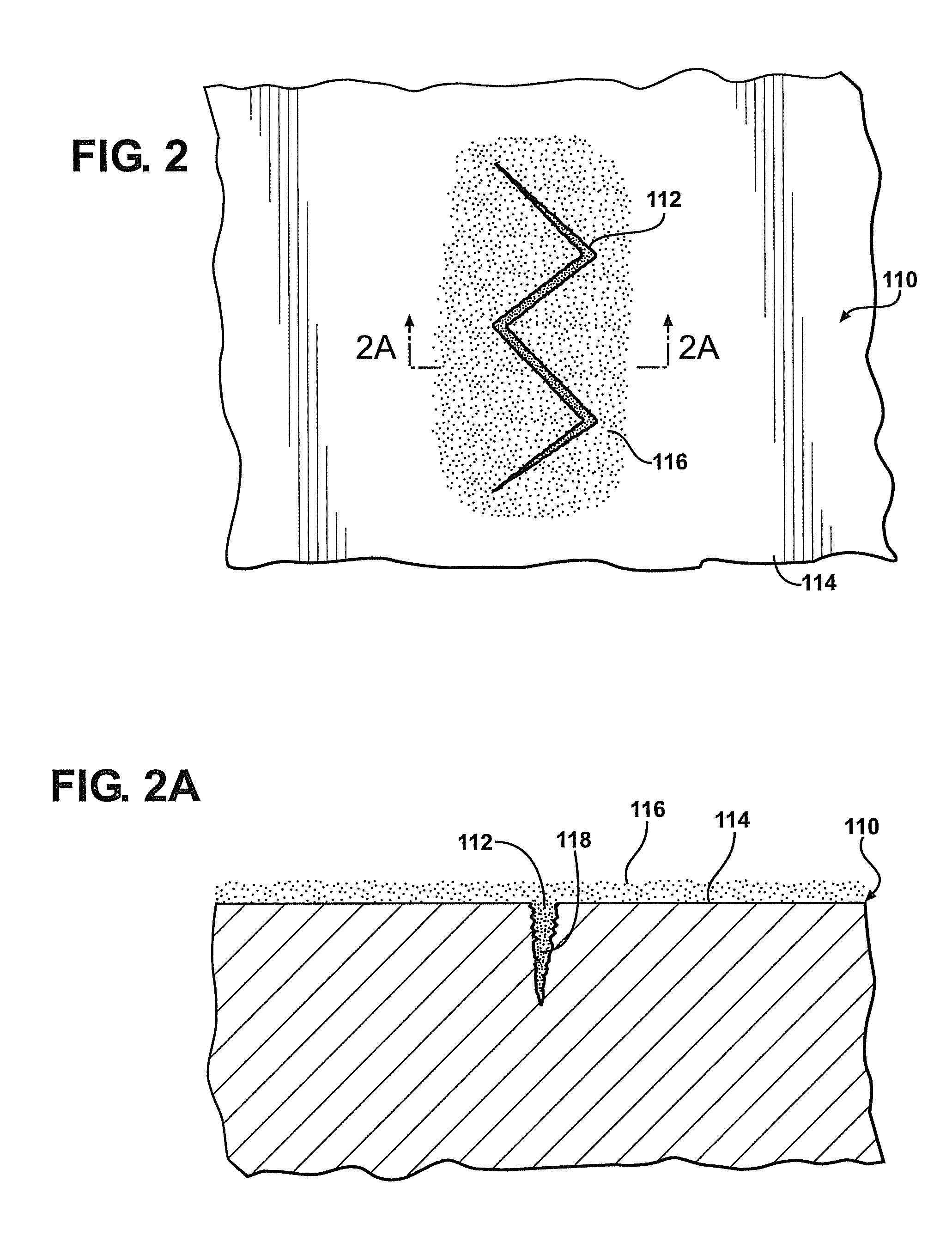Thermography inspection of surface discontinuities
a discontinuity and surface technology, applied in the direction of material thermal analysis, material flaw investigation, instruments, etc., can solve the problems that cracks or defects that may affect the integrity of structural components may not be readily visible, and the loss of structural integrity is typically
- Summary
- Abstract
- Description
- Claims
- Application Information
AI Technical Summary
Problems solved by technology
Method used
Image
Examples
first embodiment
[0026]FIG. 1 illustrates a component or test specimen 10 in accordance with the invention. A surface discontinuity is indicated by reference numeral 12 and extends inwardly from a surface 14 of the specimen 10, see FIG. 1A. In an initial step of the method of the present embodiment, a liquid detection medium 16 is applied to at least a portion of the surface 14 to be monitored. The liquid detection medium 16 is applied to substantially coat the surface 14 as well as to transport into the discontinuity 12, such as through capillary action drawing the liquid detection medium 16 into a subsurface cavity 18 defined by the discontinuity 12. That is, the adhesion of the liquid detection medium 16 to the inwardly extending surfaces of the cavity 18 interacts with the surface tension of the liquid to cause the liquid detection medium 16 to move into the cavity 18. The liquid detection medium 16 may be applied by any known technique to substantially wet the specimen surface 14 with the detec...
second embodiment
[0031]FIG. 2 illustrates a component or test specimen 110 in accordance with the invention. A surface discontinuity is indicated by reference numeral 112 and extends inwardly from a surface 114 of the specimen 110, see FIG. 2A. As in the previous embodiment, in an initial step of the method of the present embodiment, a detection medium 116 is applied to substantially coat at least a portion of the surface 114 to be monitored as well as to transport into the discontinuity 112. For example, the detection medium 116 may be a liquid detection medium and may transport into the discontinuity 112 through capillary action drawing the detection medium 116 into a subsurface cavity 118 defined by the discontinuity 112. The detection medium 116 may be applied by any known technique to substantially cover at least a portion of the specimen surface 114 to be monitored with the detection medium 116, with sufficient liquid being applied to cause the detection medium 116 to transport under capillary...
PUM
| Property | Measurement | Unit |
|---|---|---|
| temperature | aaaaa | aaaaa |
| surface discontinuities | aaaaa | aaaaa |
| temperature | aaaaa | aaaaa |
Abstract
Description
Claims
Application Information
 Login to View More
Login to View More - R&D
- Intellectual Property
- Life Sciences
- Materials
- Tech Scout
- Unparalleled Data Quality
- Higher Quality Content
- 60% Fewer Hallucinations
Browse by: Latest US Patents, China's latest patents, Technical Efficacy Thesaurus, Application Domain, Technology Topic, Popular Technical Reports.
© 2025 PatSnap. All rights reserved.Legal|Privacy policy|Modern Slavery Act Transparency Statement|Sitemap|About US| Contact US: help@patsnap.com



